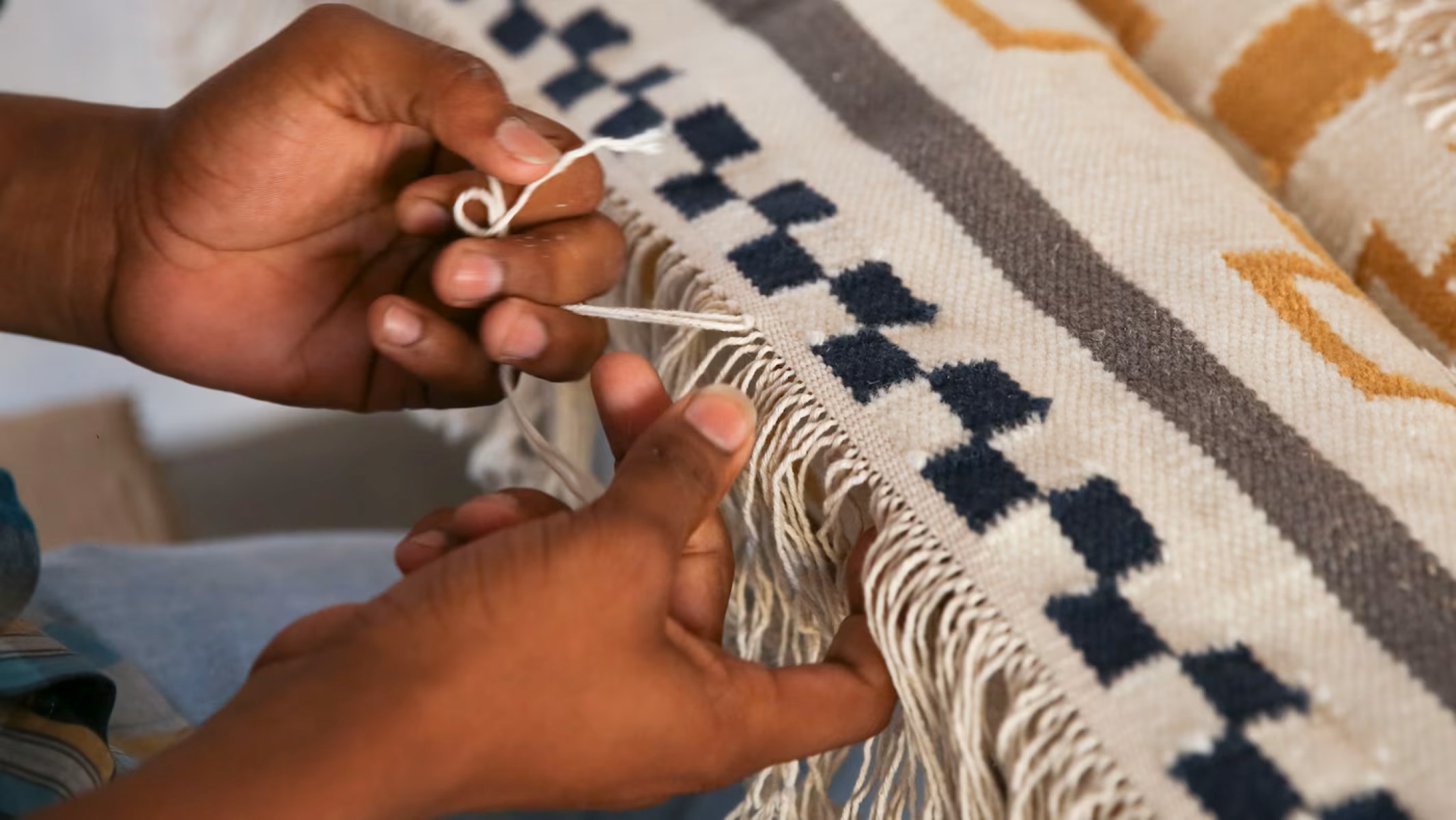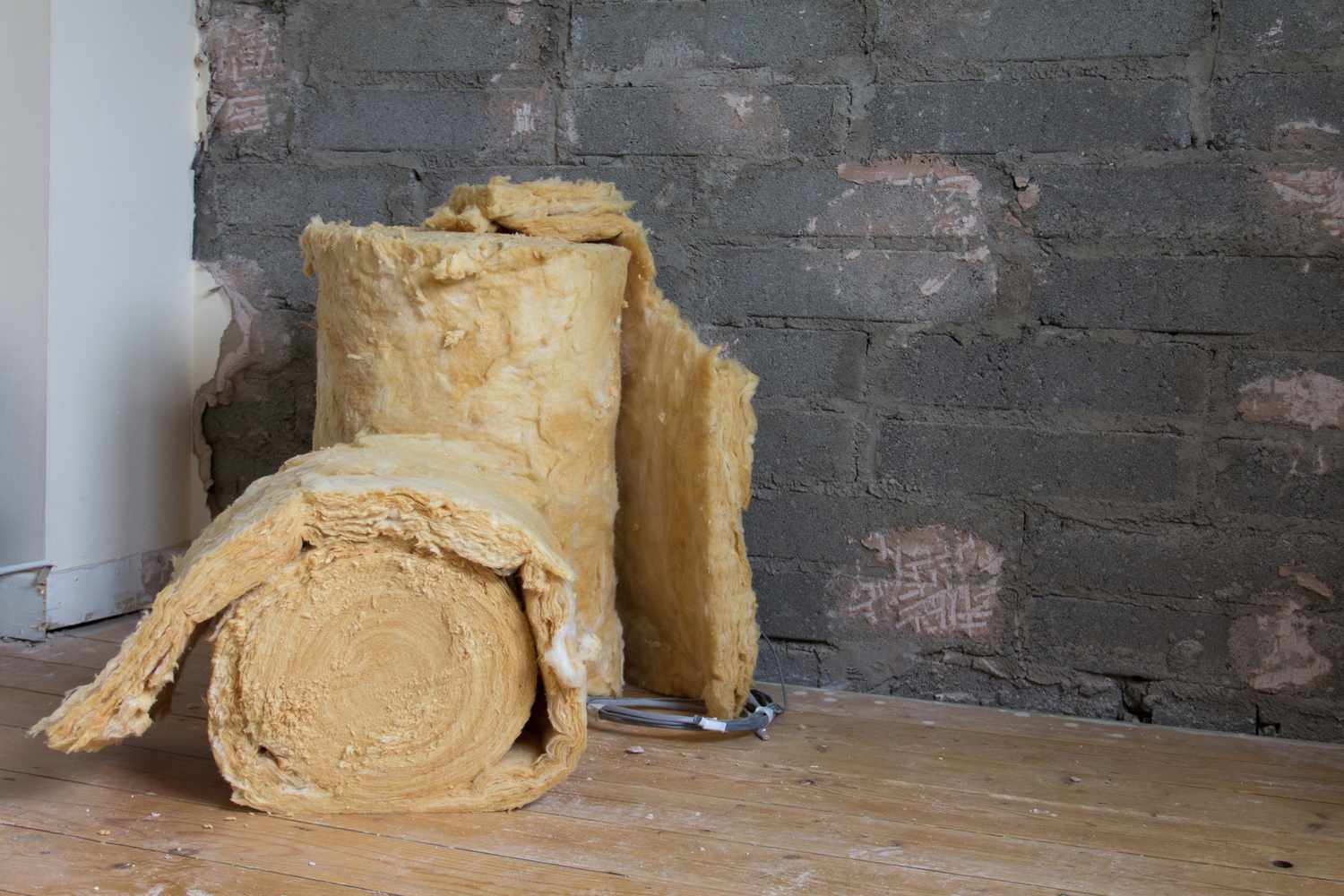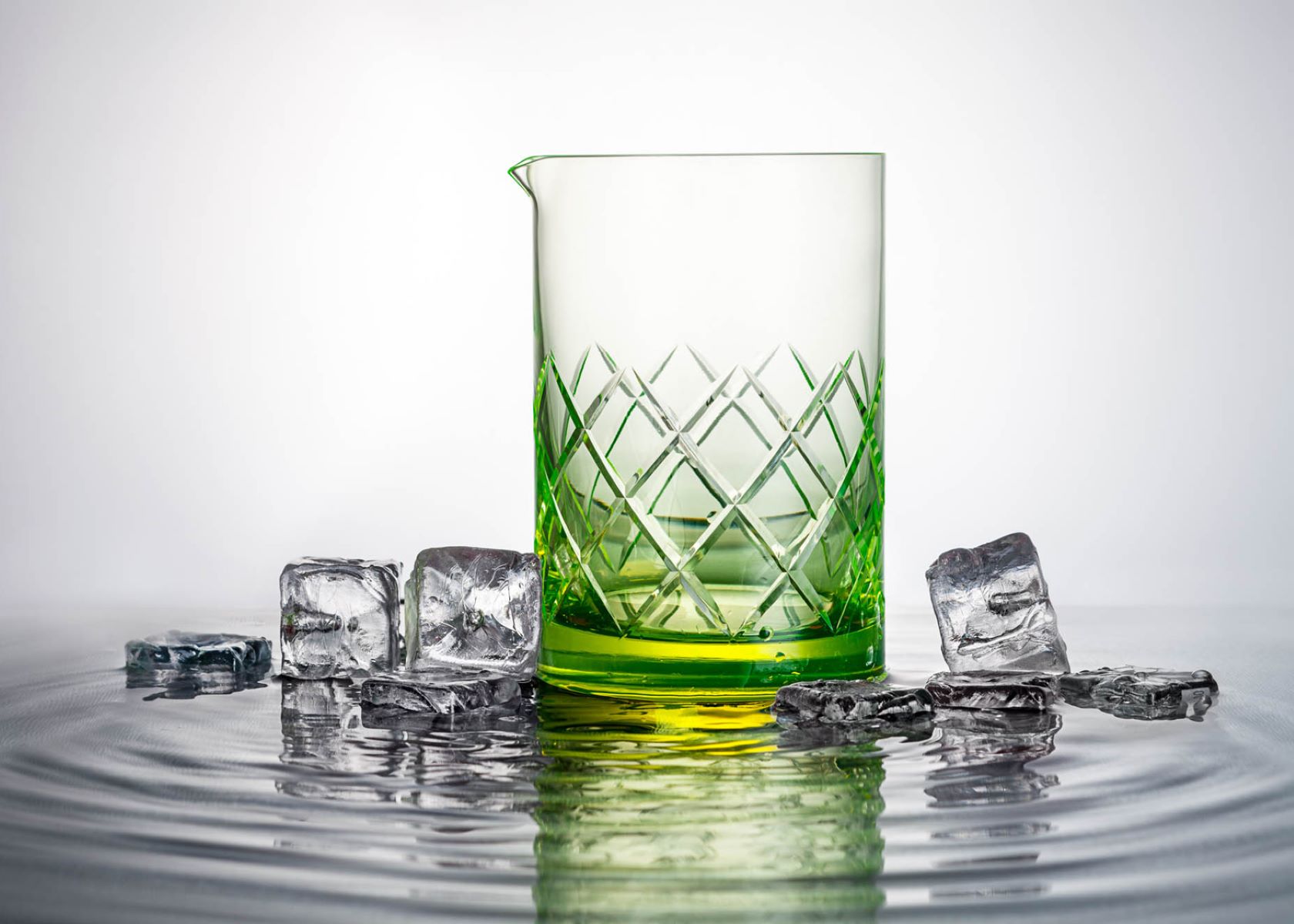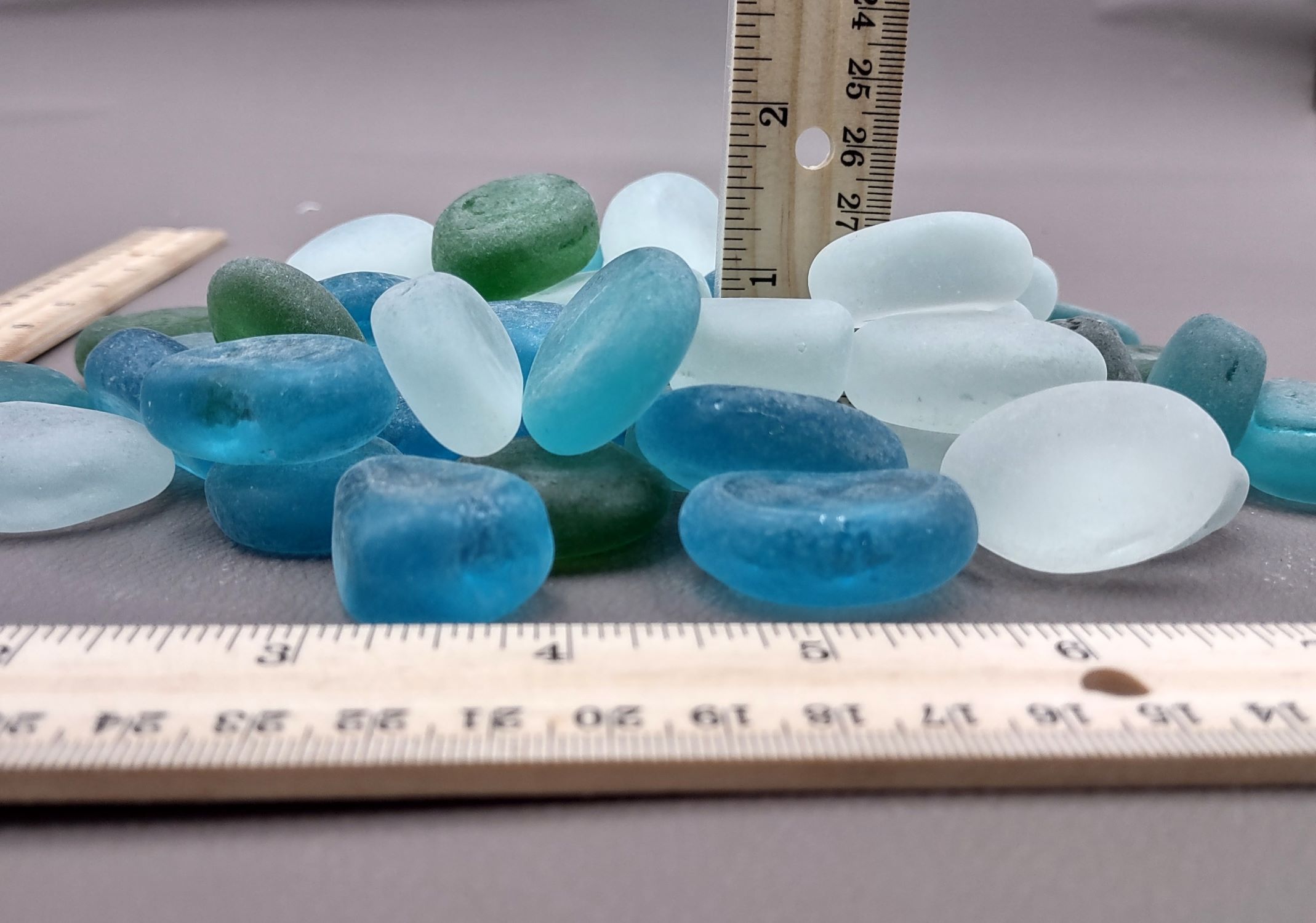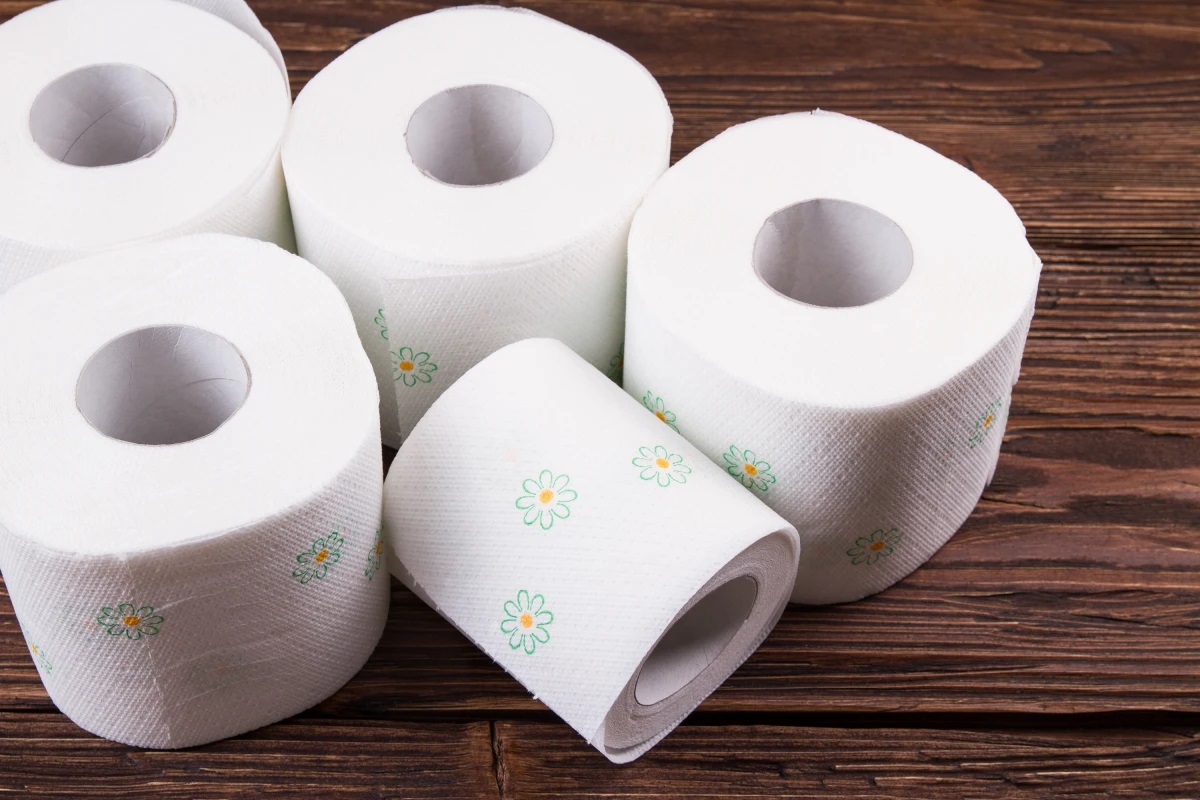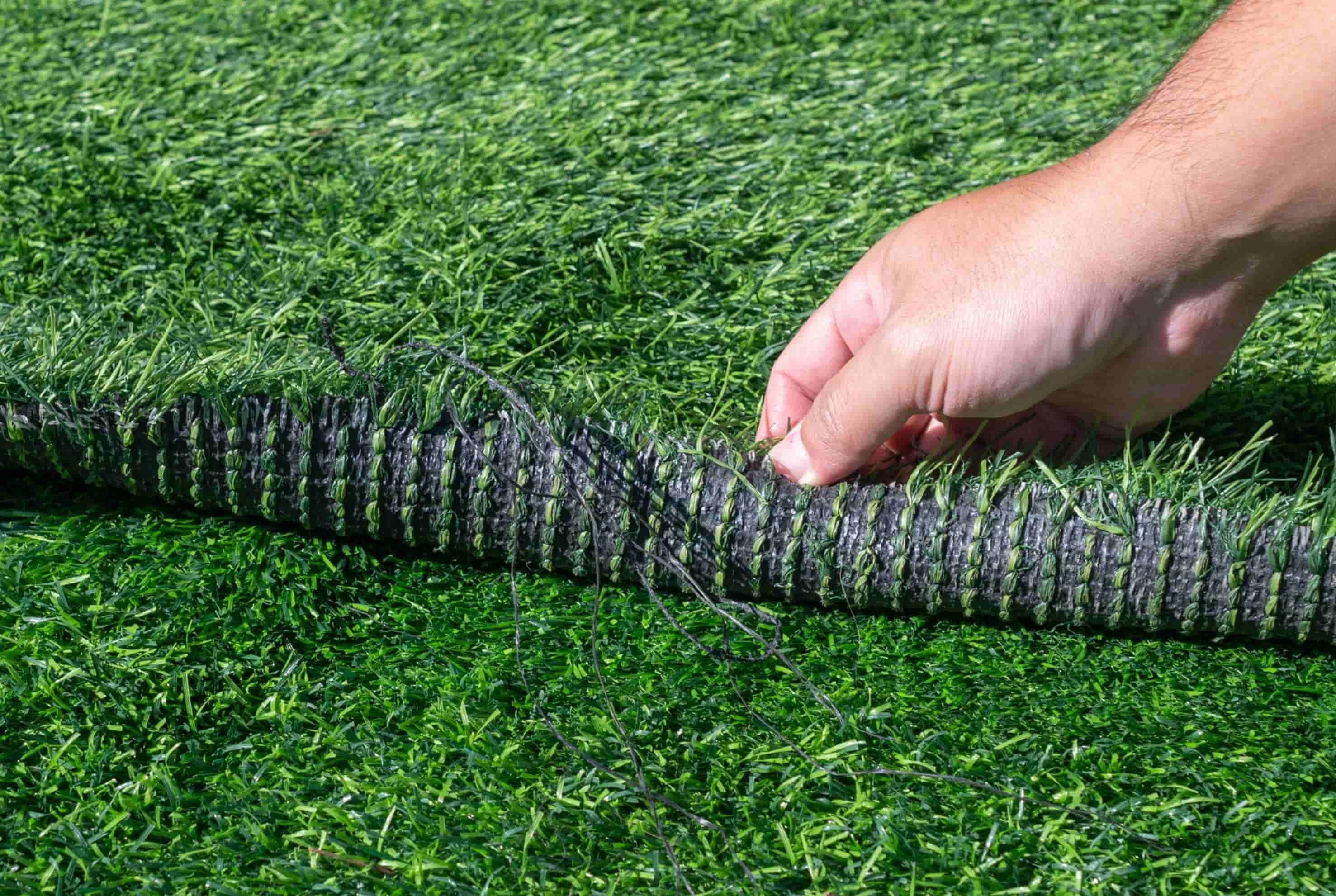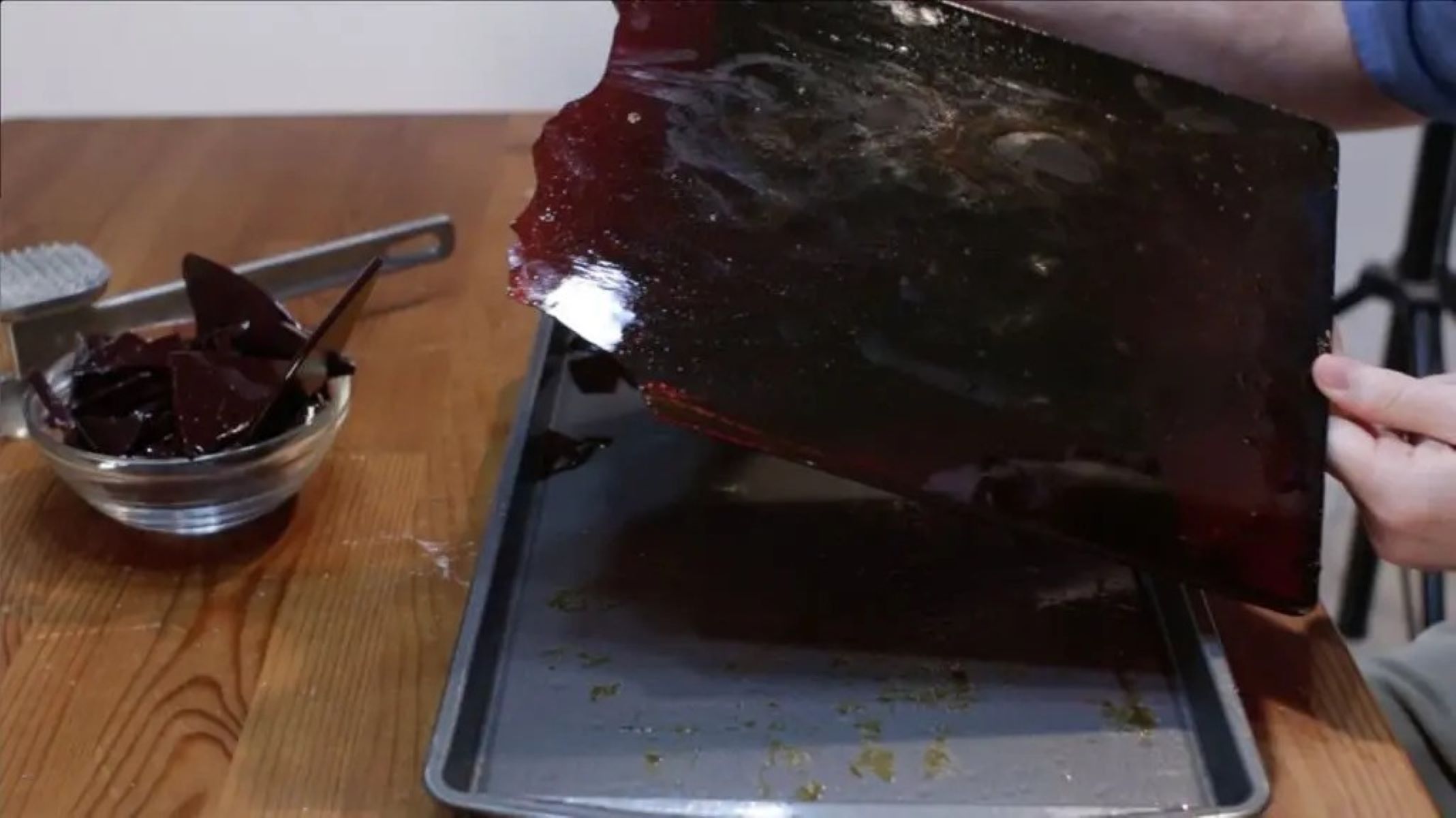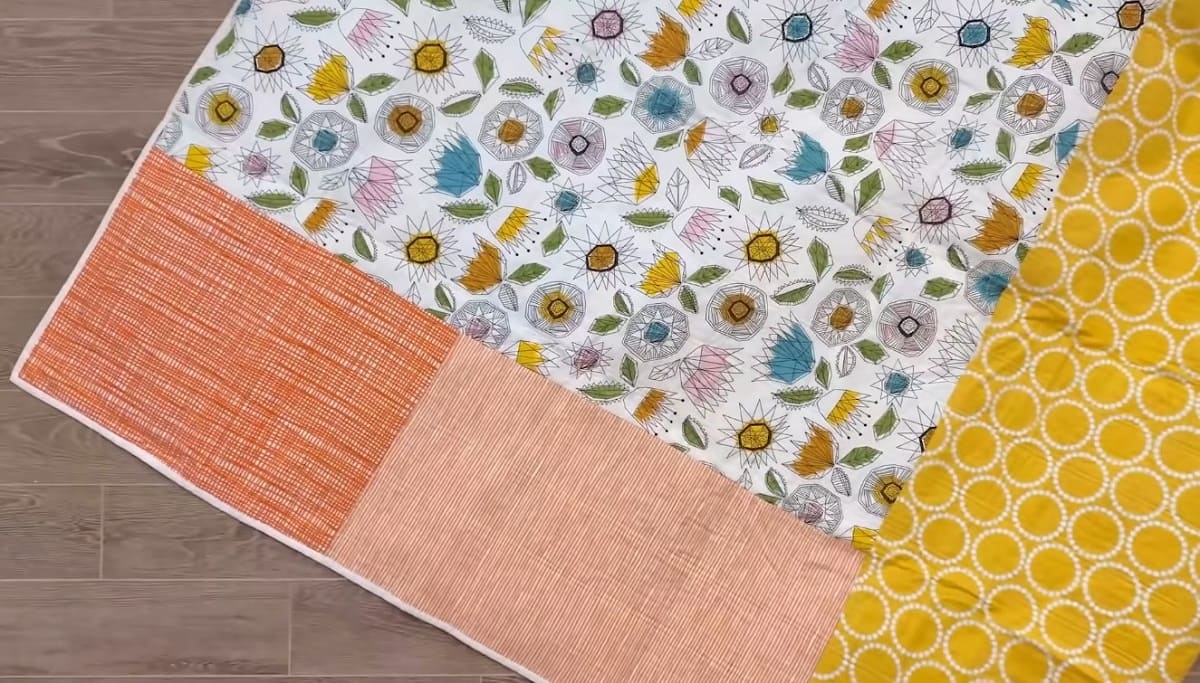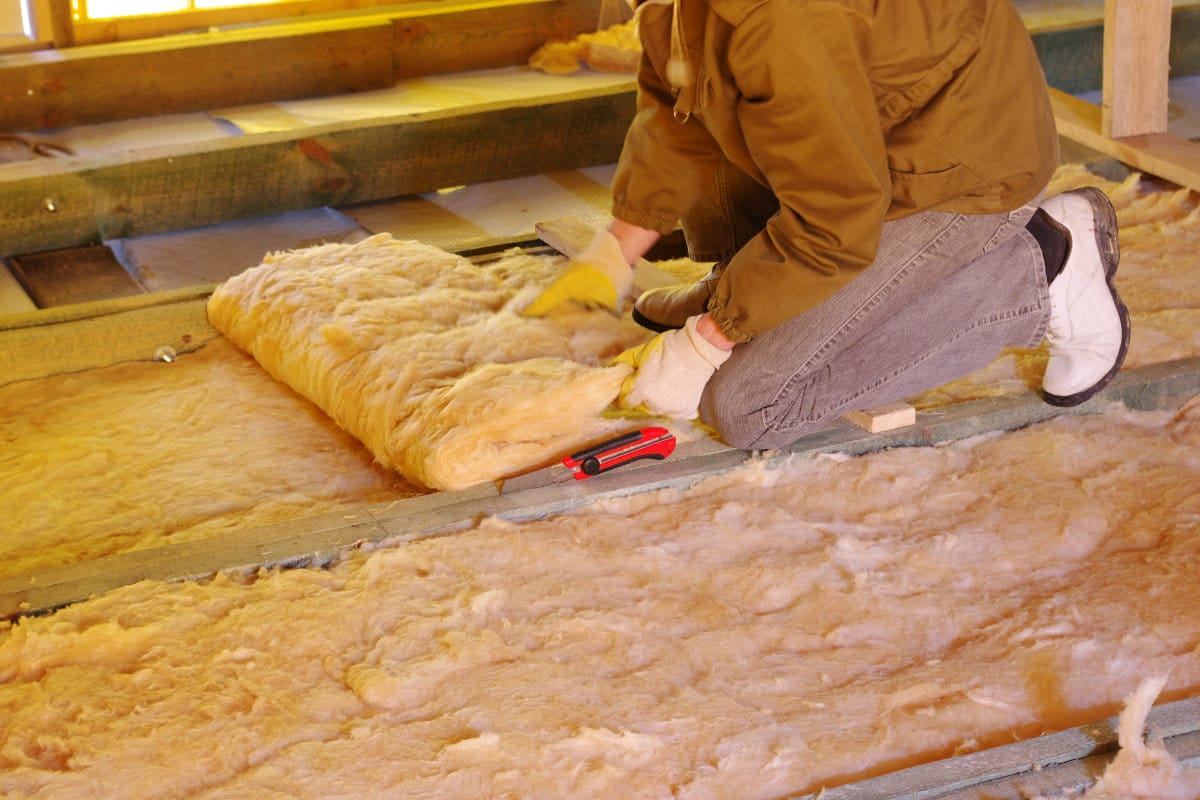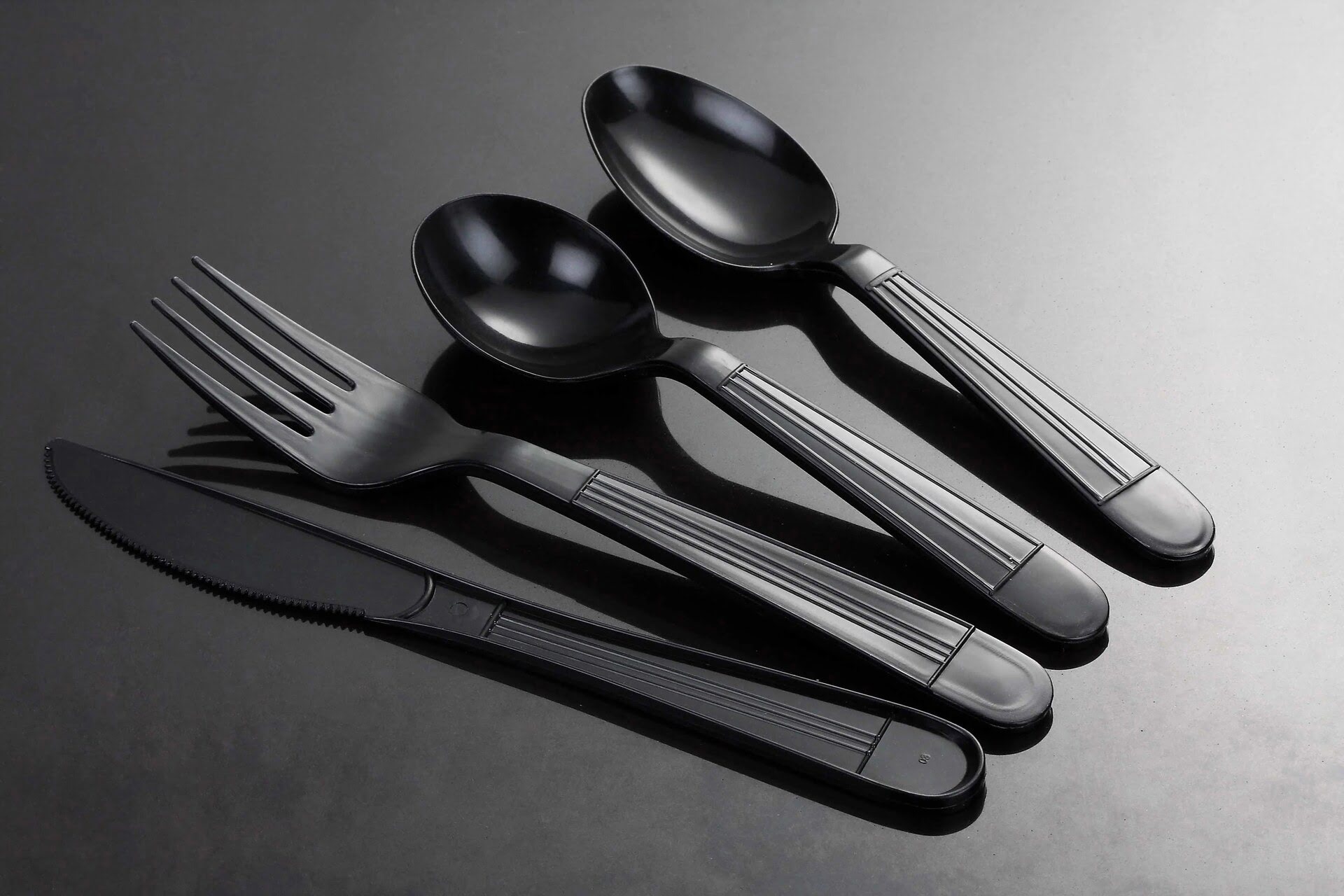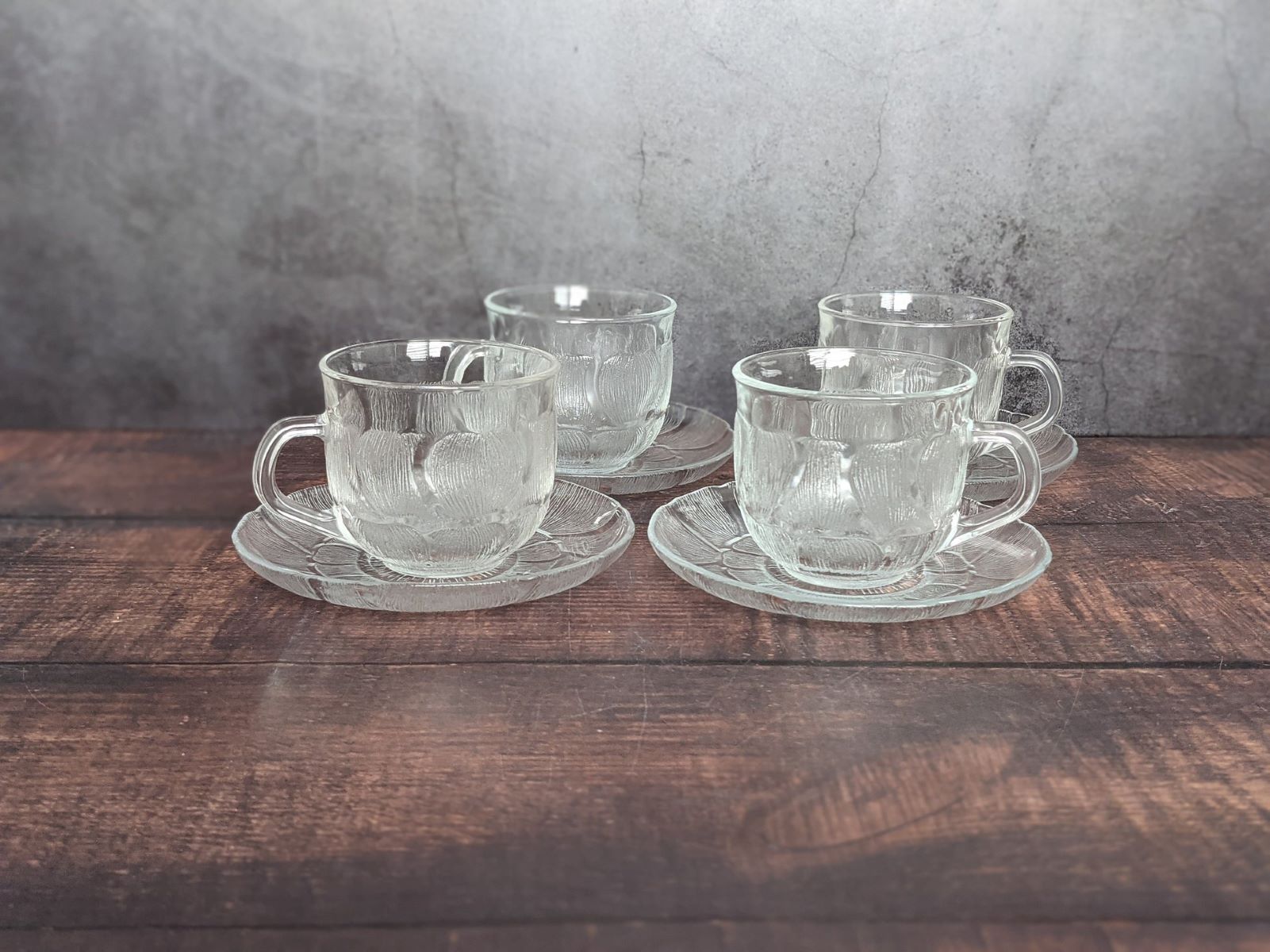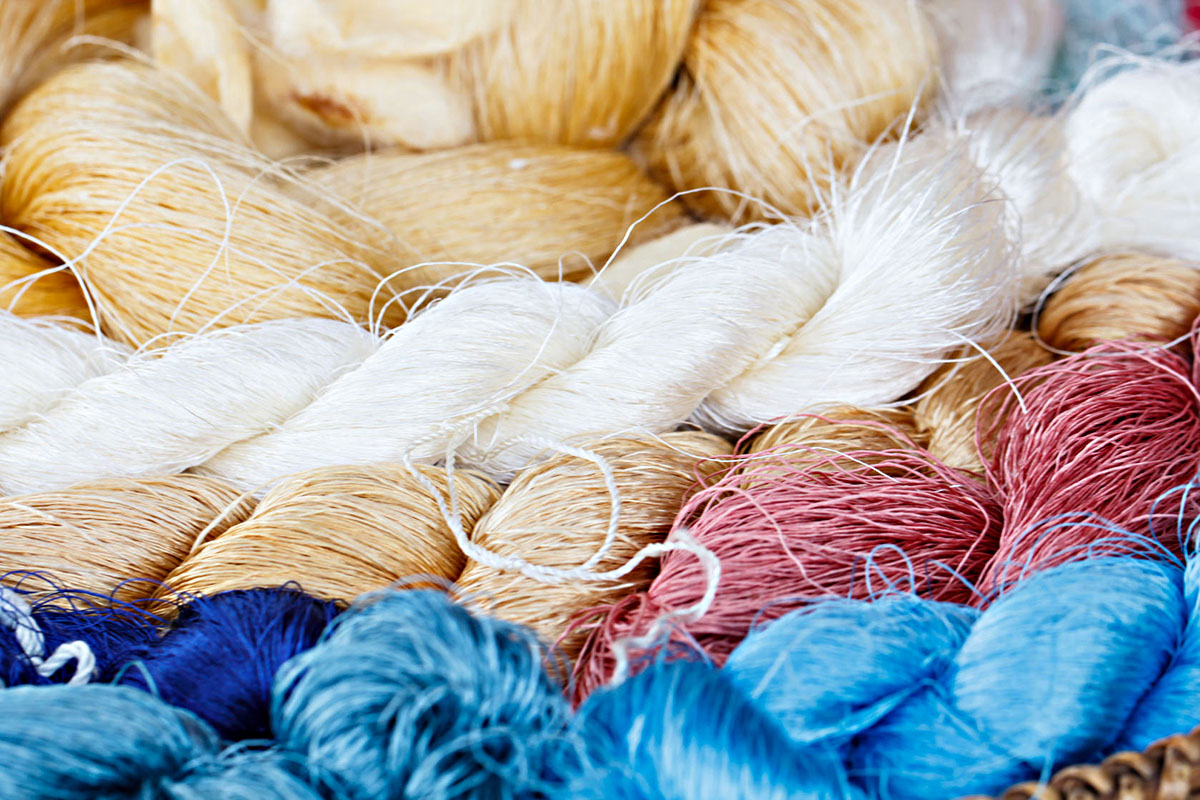

Articles
How Carpets Are Made
Modified: August 28, 2024
Discover the fascinating process of how carpets are made through informative articles. Gain insight into the various materials, techniques, and craftsmanship involved.
(Many of the links in this article redirect to a specific reviewed product. Your purchase of these products through affiliate links helps to generate commission for Storables.com, at no extra cost. Learn more)
Introduction
Carpets have been an integral part of homes and buildings for centuries, providing comfort, insulation, and aesthetic appeal. From luxurious Persian rugs to modern-day wall-to-wall carpets, the art of carpet making has evolved over time, incorporating various techniques and materials. Understanding how carpets are made can give you a deeper appreciation for the craftsmanship involved in creating these beautiful and functional floor coverings.
In this article, we will explore the history of carpet making, different types of carpet fibers, the weaving techniques used, the dyeing and coloring process, design and pattern creation, backing and binding methods, as well as the finishing and quality control procedures. We will also provide some maintenance and cleaning tips to help you keep your carpets looking fresh and vibrant for years to come.
So, let’s dive into the fascinating world of carpet making and discover the intricate process behind these versatile and stylish floor coverings.
Key Takeaways:
- Carpets are a rich blend of history, artistry, and craftsmanship, from ancient hand-knotted rugs to modern machine-woven designs. Understanding the intricate process of carpet making enhances our appreciation for these versatile and stylish floor coverings.
- Choosing the right carpet involves considering factors such as fiber type, durability, and style. Proper maintenance and cleaning routines are essential for preserving the beauty and longevity of carpets, ensuring they remain fresh and vibrant for years to come.
Read more: What Is Smartstrand Carpet Made Of
History of Carpet Making
The art of carpet making dates back thousands of years, with evidence of carpet weaving found in ancient civilizations such as Egypt, Persia (modern-day Iran), and China. The first known example of a true carpet was discovered in a burial mound in Siberia, dating back to the 5th century BCE.
Carpet making flourished in the Middle East during the Islamic Golden Age, reaching its peak in countries like Persia, Turkey, and India. These regions became renowned for their intricate designs, vibrant colors, and exceptional craftsmanship.
The introduction of the loom revolutionized carpet making, allowing for more complex patterns and larger-scale production. Hand-woven carpets gradually gave way to machine-made ones during the Industrial Revolution in the 18th century. Today, both hand-woven and machine-made carpets continue to be produced, each with its unique characteristics and appeal.
Throughout history, carpets have played a significant role not only as floor coverings but also as status symbols, cultural artifacts, and art forms. They adorned palaces, mansions, and places of worship, reflecting the wealth and taste of their owners. Carpets also served practical purposes, providing insulation, dampening sound, and adding warmth to cold floors.
As technology advanced, carpet making techniques evolved, resulting in more diverse and innovative designs. Today, carpets come in a variety of styles, materials, and sizes, catering to different tastes and interior design preferences.
Whether it’s the intricate floral motifs of a Persian rug or the sleek geometric patterns of a contemporary carpet, the history of carpet making is a testament to the creativity and skill of artisans throughout the ages.
Types of Carpet Fibers
When it comes to carpets, the type of fiber used plays a crucial role in determining its durability, appearance, and performance. Various carpet fibers are available in the market, each with its unique characteristics and benefits. Let’s explore the most commonly used types of carpet fibers:
- Nylon: Nylon is one of the most popular and widely used carpet fibers. It is known for its durability, resilience, and excellent resistance to wear and tear. Nylon carpets are also highly resistant to stains and fading, making them suitable for high-traffic areas. They are available in a wide range of styles, colors, and textures.
- Polyester: Polyester fibers are known for their luxurious softness and vibrant colors. These carpets are inherently stain-resistant, making them a great choice for households with children or pets. Additionally, polyester carpets are typically more affordable than nylon ones, making them a popular option for budget-conscious consumers.
- Olefin (Polypropylene): Olefin is a synthetic fiber that is highly resistant to stains, moisture, and fading. It is often used in outdoor carpets or in areas with high moisture, such as basements or bathrooms. Olefin carpets are not as durable as nylon or polyester, but they offer excellent value for money and are easy to clean.
- Wool: Wool is a natural fiber known for its luxurious feel, resilience, and natural stain resistance. Wool carpets are commonly associated with high-quality and premium products. They are soft, environmentally friendly, and have excellent insulation properties. However, wool carpets require more care and maintenance compared to synthetic fibers.
- Polypropylene: Polypropylene is a cost-effective synthetic fiber commonly used in low-traffic areas or commercial settings. It is resistant to stains, fading, and moisture, making it a suitable choice for offices, retail spaces, and rental properties. Polypropylene carpets are not as durable as nylon or wool but are an affordable option for those on a tight budget.
When choosing a carpet, consider factors such as the desired level of durability, stain resistance, softness, and budget. Also, keep in mind the specific needs and lifestyle of your household. Consulting with a carpet professional can help you make an informed decision and select the right carpet fiber for your space.
Carpet Weaving Techniques
The process of weaving carpets involves interlacing yarns or fibers to create a sturdy and cohesive fabric. Various weaving techniques are used to produce different types of carpets with unique patterns and textures. Let’s explore some of the commonly used carpet weaving techniques:
- Hand-Knotting: Hand-knotting is one of the oldest and most labor-intensive carpet weaving techniques. Skilled artisans tie individual knots by hand onto the warp threads, creating intricate patterns and designs. This technique allows for detailed and high-quality carpets, but it is time-consuming and requires exceptional craftsmanship.
- Hand-Tufting: Hand-tufting involves using a tufting gun to insert loops of yarn into a fabric backing. The loops are then secured with a layer of glue or backing material. Hand-tufted carpets are quicker to produce and can be made with various pile heights and patterns. They are a popular choice for those looking for affordable and visually appealing carpets.
- Machine-Weaving: Machine-weaving involves the use of power looms to create carpets. These automated machines can produce large quantities of carpets quickly and efficiently. Machine-woven carpets can vary in quality depending on the technology and materials used. They are often more affordable than hand-woven carpets but may lack the intricate detailing and craftsmanship.
- Flatweave: Flatweave carpets are woven on a loom, creating a flat and reversible surface. This technique does not involve any pile, resulting in a thinner and more lightweight carpet. Flatweave carpets, such as kilims and dhurries, are known for their versatility, durability, and intricate geometric designs.
Each weaving technique offers its own unique characteristics and aesthetics. Hand-woven carpets are often considered more luxurious and valuable due to the intricate craftsmanship involved. Machine-woven carpets, on the other hand, provide affordability and consistency in design.
When choosing a carpet, consider not only the weaving technique but also factors like the desired style, durability, and budget. It’s always recommended to consult with a carpet professional who can guide you in selecting the right carpet weaving technique and style to suit your needs and preferences.
Dyeing and Coloring Process
The dyeing and coloring process is a crucial step in carpet making, as it adds vibrancy, depth, and character to the fibers. There are various methods used to achieve different colors and patterns on carpets. Let’s explore the dyeing and coloring process in more detail:
Natural Dyeing: In traditional carpet making, natural dyes extracted from plant sources, insects, or minerals were used to color the fibers. These natural dyes created earthy tones and subtle shades. However, the process was time-consuming and required expertise to achieve consistent and vivid colors.
Synthetic Dyeing: With advancements in technology, synthetic dyes have become the preferred choice for coloring carpets. Synthetic dyes offer a wide range of vibrant colors, are more affordable, and allow for better colorfastness. They also offer consistency in color, ensuring that carpets maintain their hue over time.
The dyeing process can be done either before or after the carpet is woven:
Pre-Dyeing: In pre-dyeing, the yarns or fibers are dyed before they are woven into the carpet. This allows for more uniform coloring throughout the carpet and ensures that even the innermost fibers have the desired color. Pre-dyeing also allows for more intricate patterns, as different colors can be woven together.
Post-Dyeing: Alternatively, the carpet can be dyed as a whole after the weaving process. Post-dyeing involves immersing the entire carpet in a dye bath or applying dye to the surface of the carpet. This method is often used for large-scale production, as it allows for efficient and consistent coloring.
In addition to solid colors, carpets can also feature patterns created through different dyeing techniques:
Printing: Carpet printing involves applying dyes to the surface of the carpet using engraved plates or screens. This method allows for detailed and intricate designs, but it may be less durable than other dyeing techniques.
Yarn Dyeing: Yarn dyeing involves dyeing individual yarns in different colors before they are woven into the carpet. This allows for carpets with patterns and stripes, as the differently colored yarns are woven together to create the design.
The dyeing and coloring process is a combination of artistry, chemistry, and technological advancements. It contributes to the unique and stunning visual appeal of carpets, enhancing their beauty and transforming them into artistic masterpieces.
When choosing a carpet, consider the material, construction, and durability. Wool carpets are durable and luxurious, while nylon carpets are stain-resistant and easy to clean.
Read more: How Is A Mattress Made
Design and Pattern Creation
The design and pattern of a carpet are crucial elements that define its visual appeal and overall aesthetic. The process of creating designs and patterns for carpets involves a combination of creative imagination, historical inspiration, and skilled craftsmanship. Let’s explore the different aspects of design and pattern creation in carpet making:
Inspiration: Carpet designs can draw inspiration from various sources, including nature, architecture, cultural motifs, and historical patterns. Traditional designs often reflect the cultural heritage and artistic traditions of the region where the carpet is produced. Contemporary designs, on the other hand, embrace modern trends and artistic expressions.
Color Combinations: Choosing the right color palette is essential in creating a visually appealing carpet. Colors can evoke certain moods, highlight specific design elements, and complement the overall ambiance of a space. Designers carefully select color combinations to create balance, contrast, and harmony within the carpet’s patterns.
Pattern Techniques: Different techniques are employed to create patterns on carpets. Some common pattern techniques include:
- Geometric Patterns: Geometric patterns are characterized by symmetrical shapes, lines, and angles. They can range from simple repeating shapes to intricate tessellations, creating a sense of order and balance.
- Floral Patterns: Floral patterns feature motifs inspired by flowers, plants, and vines. These patterns can range from realistic depictions to stylized and abstract interpretations, adding a touch of elegance and softness to the carpet.
- Medallion Patterns: Medallion patterns often center around a large, ornate motif, which serves as the focal point of the design. These patterns are commonly found in traditional Oriental carpets, adding a sense of grandeur and opulence.
- Pictorial Patterns: Pictorial patterns depict scenes or images, such as landscapes, animals, or historical events. These patterns can be highly detailed and require exceptional skill to create realistic representations.
Repeating Patterns: Repeating patterns are created by repeating a specific motif or design element throughout the carpet. This technique can create a sense of rhythm and continuity, adding visual interest and texture.
Custom Designs: Many carpet manufacturers offer the option of custom designing a carpet to suit individual preferences. This allows customers to select specific patterns, colors, and sizes to create a truly unique and personalized piece.
The design and pattern creation process combines the vision of the designer, the expertise of the artisans, and the cultural influence of the carpet-making region. It results in carpets that not only enhance the decor of a space but also become works of art in their own right.
Backing and Binding
The backing and binding processes play a crucial role in ensuring the durability, stability, and longevity of carpets. These steps provide structural support and help secure the edges of the carpet. Let’s delve into the backing and binding techniques commonly used in carpet making:
Backing: The backing of a carpet refers to the material that is applied to the underside of the carpet to provide stability and strength. There are different types of backing materials used:
- Jute Backing: Jute is a natural fiber commonly used as a backing material. It is environmentally friendly, provides excellent flexibility, and helps prevent the carpet from stretching out of shape. Jute backing is often found in high-quality carpets.
- Latex Backing: Latex is a synthetic material that is frequently used as a backing due to its durability and water resistance. It is applied as a layer of rubber or latex compound, which helps to secure the fibers and prevent unraveling. Latex backing is commonly used in both hand-woven and machine-made carpets.
- Felt Backing: Felt is a thick, dense material made from compressed fibers. It provides cushioning and insulation, making carpets feel softer underfoot. Felt backing is often used in luxury carpets and rugs.
Binding: Binding involves securing the edges of a carpet to prevent fraying and unraveling. There are several binding methods used in carpet making:
- Serging: Serging is a traditional binding technique where yarn or thread is tightly looped along the edges of the carpet. This provides a decorative and durable finish. Serging is commonly seen in hand-woven and oriental carpets.
- Overlocking: Overlocking, also known as whipstitching, involves using an overlocking machine to sew a tightly woven thread along the edges of the carpet. This creates a clean and professional finish, especially for machine-made carpets.
- Binding Tape: Binding tape is a narrow strip of fabric or synthetic material that is stitched or fused along the edges of the carpet. This method provides a neat and uniform look and is commonly used in contemporary carpet designs.
Backing and binding not only provide structural integrity but also contribute to the overall appearance and finish of the carpet. They ensure that the carpet remains intact and well-preserved, even with regular use and foot traffic.
Finishing and Quality Control
The finishing and quality control processes are essential steps in carpet manufacturing. These processes ensure that the carpets meet the desired standards of quality, appearance, and functionality. Let’s explore the key aspects of finishing and quality control in carpet making:
Trimming: After the carpet is woven and the backing is applied, the next step is trimming. Trimming involves carefully cutting or shearing the fibers to achieve a consistent and uniform pile height. This process gives the carpet a polished and finished appearance.
Stretching and Blocking: Once the carpet is trimmed, it undergoes a stretching and blocking process. Stretching involves attaching the carpet to a frame and pulling it tightly to eliminate any wrinkles or unevenness. Blocking is the process of allowing the carpet to cool and set in its stretched position, ensuring that it maintains its shape and dimensions.
Inspection: An important part of the finishing and quality control process is thorough inspection. Each carpet is carefully examined for any defects, flaws, or inconsistencies in pattern, color, or pile height. Skilled inspectors meticulously check for any weaving errors, missed stitches, or irregularities in the carpet’s surface.
Quality Control: Quality control is a comprehensive process that ensures that every carpet meets the manufacturer’s standards. It involves conducting various tests and inspections to assess the carpet’s durability, colorfastness, resistance to stains, and overall quality. Any carpets that do not meet the required quality specifications are rejected or undergo necessary corrections before being released for sale.
Finishing and quality control are crucial in producing carpets that are visually appealing, long-lasting, and meet customer expectations. These processes help maintain consistent quality across different batches of carpets and ensure customer satisfaction.
It is important to note that reputable carpet manufacturers adhere to industry standards and guidelines for finishing and quality control. Certifications such as the Carpet and Rug Institute’s Green Label Plus ensure that carpets meet environmental and indoor air quality standards.
Maintenance and Cleaning Tips
Maintaining and cleaning your carpets properly is essential to preserve their beauty, extend their lifespan, and ensure a healthy indoor environment. Here are some tips to help you keep your carpets looking fresh and clean:
Regular Vacuuming: Regular vacuuming is the most important step in carpet maintenance. Vacuum your carpets at least once a week to remove dirt, dust, and debris. Pay extra attention to high-traffic areas and vacuum in both directions to ensure thorough cleaning.
Immediate Stain Removal: Act quickly when spills occur to prevent stains from setting. Blot the spill with a clean cloth or paper towel, avoiding rubbing or scrubbing, which can cause the stain to spread. Use a mild detergent or carpet stain remover if needed, following the manufacturer’s instructions.
Deep Cleaning: Every 12-18 months, consider deep cleaning your carpets to remove embedded dirt and rejuvenate the fibers. You can hire professional carpet cleaners or use a carpet cleaning machine. Follow the recommended cleaning method for your carpet type to avoid damage.
Regular Rotating: To prevent uneven wear and traffic patterns, rotate your furniture periodically. This helps distribute the weight and pressure on the carpet, promoting more even wear and extending its lifespan.
Spot Test Cleaning Products: Before using any carpet cleaning products, always perform a spot test in an inconspicuous area. This helps ensure that the product doesn’t cause color fading or damage to the carpet fibers.
Protect from Sunlight: Prolonged exposure to direct sunlight can cause fading and discoloration of carpets. Use curtains, blinds, or UV-protective window films to minimize sun damage.
Use Doormats and Shoe Removal: Place doormats at entrances to reduce the amount of dirt and debris that enters your home. Encourage family members and guests to remove their shoes before stepping onto the carpets to prevent dirt and stains.
Regular Professional Maintenance: Consider scheduling professional carpet cleaning and maintenance periodically. Professional cleaners have the expertise and equipment to deep clean and refresh your carpets effectively.
Avoid Excessive Moisture: Excessive moisture can damage carpets and promote the growth of mold and mildew. Clean up spills promptly, use a dehumidifier in humid environments, and ensure adequate ventilation in carpeted areas.
Remember, proper maintenance and cleaning routines can significantly extend the life and appearance of your carpets. Always follow the manufacturer’s recommendations for cleaning and care, as different carpet fibers and constructions may require specific treatments.
By incorporating these maintenance and cleaning practices into your routine, you can enjoy beautiful, clean, and fresh-smelling carpets for years to come.
Read more: How Is Fertilizer Made
Conclusion
Carpets are not just floor coverings; they are works of art that add warmth, style, and comfort to our living spaces. The process of carpet making involves intricate techniques, skilled craftsmanship, and attention to detail. From the history of carpet making to the types of carpet fibers, weaving techniques, dyeing processes, design creation, and finishing, each step contributes to the creation of a beautiful and functional carpet.
Understanding how carpets are made allows us to appreciate the artistry and effort that goes into producing these versatile floor coverings. Whether it’s a hand-knotted Persian rug, a plush wall-to-wall carpet, or a trendy area rug, carpets enhance the aesthetics of our homes, offices, and public spaces.
Choosing the right carpet requires considering factors such as the type of fiber, durability, and style that suit your needs and preferences. It’s important to properly maintain and clean your carpets to preserve their beauty and ensure their longevity. Regular vacuuming, immediate stain removal, and periodic deep cleaning are essential for keeping carpets looking fresh and vibrant.
As technology advances and design trends evolve, carpet making continues to innovate and adapt. From traditional patterns to modern designs, there is a wide range of options to suit every taste and interior design style.
Whether you appreciate the rich history and cultural significance of carpets or simply enjoy the comfort and beauty they add to your space, the art of carpet making will continue to captivate and inspire. So, next time you walk across a carpet, take a moment to appreciate the craftsmanship and creativity that went into its creation.
Frequently Asked Questions about How Carpets Are Made
Was this page helpful?
At Storables.com, we guarantee accurate and reliable information. Our content, validated by Expert Board Contributors, is crafted following stringent Editorial Policies. We're committed to providing you with well-researched, expert-backed insights for all your informational needs.
